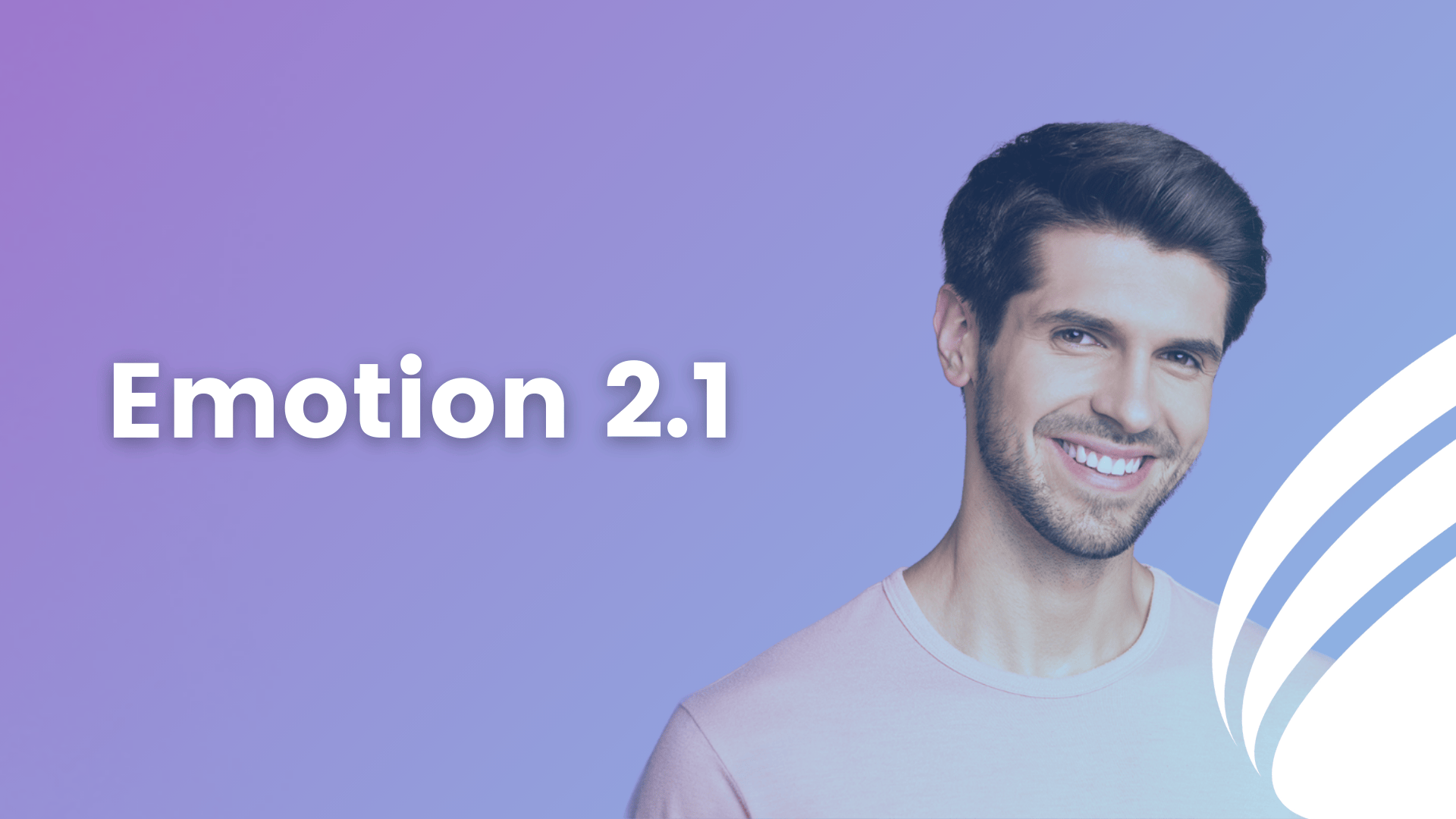
Emotional intelligence (EI) is becoming increasingly valued by companies and has firmly established itself as a key indicator of both professional success and personal fulfilment. People with high EI tend to reach their goals more easily, communicate with ease, inspire those around them and contribute to a motivating and dynamic work environment.
Yet, despite its growing popularity, EI remains a somewhat vague concept, used in all sorts of ways and not always easy to measure in a rigorous manner. To fill that gap, EMOTION 2.1 was built on the foundations laid by the pioneers of emotional intelligence, offering a reliable tool that stays true to the very essence of this now-essential skill.
EMOTION 2.1: a new way to assess performance
Emotional intelligence is all about being able to navigate emotions—your own and other people’s—smoothly and wisely. It’s about recognising what you’re feeling, understanding where it’s coming from, and using that knowledge to act better, make smarter decisions, communicate more effectively—in short, to do the right thing at the right time.
The EMOTION 2.1 test evaluates EI through 15 core competencies, including self-control, tact, assertiveness, resilience, and of course, empathy—a skill that’s increasingly in demand in the workplace, particularly among managers.
Let’s take a look at three key ways EMOTION 2.1 can be used to fully appreciate its value:
Recruitment: identifying emotionally intelligent talent
Using an EI test in recruitment helps assess crucial soft skills that traditional tools often overlook—things like stress management, openness to diversity, empathy, and adaptability. EMOTION 2.1 is especially relevant for roles with a strong interpersonal element, such as management, sales, HR, training, or healthcare.
How to use EMOTION 2.1 in recruitment?
Depending on the role, you’ll want to check whether candidates have the emotional capacity to thrive in the position. Say you’re hiring a key account manager who’ll be dealing with high-profile clients, managing a major portfolio, and chasing tough quarterly targets—then certain emotional and social skills are absolutely key.
First, you’ll want to make sure they’ve got strong self-control to make sound decisions under pressure. Their resilience will also be important—the ability to bounce back after setbacks or rejection without losing motivation. And assertiveness will be essential too: knowing how to stand their ground and negotiate confidently while still listening to and respecting the client.
Coaching: building confidence from the inside out
There’s still a common misconception that work-related struggles stem from a lack of technical skills, but in truth, it’s often behavioural challenges that cause the biggest issues. Poorly managed stress, fear of conflict, low self-confidence, or giving up too easily can all seriously impact performance. Coaching helps uncover these emotional blocks and offers practical strategies to turn them into strengths.
How to use EMOTION 2.1 in coaching?
Once the coach has identified areas of improvement in the EMOTION 2.1 report, they’ll work with the client to understand how these emotional skills impact them at work and co-create a development plan to strengthen them.
Let’s take an example: a newly retrained trainer scores low in assertiveness, emotional expression, and self-confidence. They struggle to set the tone at the start of training sessions, avoid negative feedback from participants, and experience high stress before each workshop. To help with this, the coach might suggest assertive communication exercises, teach them how to deliver clear, constructive messages, and help them draw on past successes to boost their confidence. Over time, the trainer not only becomes more at ease but also gains credibility in their new role.
Team audits: boosting team dynamics and collaboration
A team audit that includes a tool like EMOTION 2.1 gives a snapshot of the group’s emotional and social skills: how they manage stress, cooperate, communicate, and trust one another.
The results highlight both the strengths and the tension points—like struggles with open disagreement, difficulty finishing projects, or a lack of mutual support. From there, you can design a tailored support programme—workshops, training sessions, or coaching—to help the team collaborate more effectively.
How to use EMOTION 2.1 in team audits?
Take a project management team working on a software rollout for a client. The test reveals low collective optimism—they don’t believe they can meet the deadlines, which holds back their commitment. A low tact score points to tense exchanges between developers and the project lead, hampering teamwork. And weak mediation skills explain why technical disputes are dragging on without resolution, creating a toxic atmosphere. Based on these insights, you could run assertive communication workshops to ease tensions, set up mediation sessions to resolve conflicts, and host goal-setting meetings to unite the team around a shared vision.






